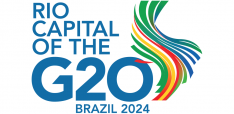Formal and Actual Similarities between Climate Change and Global Inequality, and Suboptimality of the Nation-State

Branko Milanovic on why we accept 'second best' solutions to climate change.
There are obvious and (to some people) surprising similarities between global climate change and global inequality. Both are obviously global problems. Neither can be solved by a single country, group or individual. In both cases, there are significant externalities and consequently coordination problems. Both issues are even formally linked (that is, not only conceptually): elasticity of carbon emissions with respect to real income is around 1. This means not only that if person’s (or country’s) income increases by 10%, emissions tend to increase at the same rate, but that the distribution of emitters mimics the distribution of income. Since in the global income distribution the top decile receives at least 50% of global income, it is also responsible for at least one-half of all emissions.
But there are also significant differences. The effects of global inequality are in part the product of high within-country inequalities that obviously have to be dealt with at the level of nation-states. There are only two parts that are truly global. The first is that high global inequality also means high global poverty; the second is that high global inequality is due to a significant extent to high inequality between countries’ incomes which in turn fuels migration.
The issue of global poverty is an ethical issues for all those who are not poor. It is not otherwise an issue that affects the non-poor in their daily lives. Moreover since they do not share space with the global poor, they, in their daily lives, tend to ignore them.
Migration is the only concrete manifestation of global inequality that affects people in rich countries. If some of them want to reduce migration, it is in their self-interest to help growth of poor countries. But the benefits and costs of migration are unevenly distributed within rich countries’ populations. Some groups like employers, users of many services, and workers with complementary skills gain from migration while others who compete with migrants, or those who are afraid that their culture would be “diluted”, lose. Thus the overall effect of global inequality on the lives of most people in rich countries boils down to the effect of migration.
The effect of global climate change is different in the sense that it is more remote in time and is uncertain. The winners and losers are not clear. To combat climate change requires adjustment of behavior by individuals and countries to forestall effects which lie in the future and whose benefits are unclear, while costs of adjustment are obvious and present. Individual adjustment, while entailing often significant monetary or convenience cost for that individual, has close to zero effect on climate change and is therefore not rational to undertake from a purely personal perspective. Change in the behavior of larger groups, induced by taxation of especially “bad” activities, can produce effects but the distribution of benefits from these adjustments is unknown. Even if the benefits were somehow equally distributed, a group that adjusted its behavior would receive a very small share of all benefits. It is a typical externality problem.
This implies that no group of people and no individual country has an incentive to do anything by itself: they have to be roped into an international framework where everyone is compelled to reduce emissions and where, in the case of success, net benefits would be, most likely, unequally distributed. (Note the similarity with social insurance schemes.) This is indeed what has happened with Kyoto and Paris accords. To complicate the matters further, however, nation-states are not really the best units to do this, although they are the only ones through which, given the current global governance structure, such policies can be conducted. This is because the man emitters who should be targeted are the rich, regardless of where they live. Thus, a much more appropriate approach would be an international (global) taxation of goods and services consumed by the rich. But for that one would need to have an international authority that would be allowed to tax citizens of different countries and to collect revenues globally.
As I mentioned above, there is a formal equivalence between global inequality and climate change. Migration, which is the strongest “negative” (from the point of view of some) effect of global inequality, also requires international coordination. The increased migration of Africans into Europe cannot be solved by any individual country alone. It can be “solved” or rather managed only by a joint action (distribution of quotas) involving both the emitting and receiving countries. But unlike climate change which is basically considered an overall “bad”, migration is not an overall “bad”, but rather an overall “good”. Therefore targeting for more action countries that are likely to be the largest emitters of migrants does not make sense.
In fact, in the case of migration, we deal with a “global good” that reduces global inequality and global poverty even if it may in some cases produce negative effects. Because of these real or putative negative effects (economic and social) we need rules that would assuage some people’s fears lest these people wreck and stop the whole process of migration. This is where the idea of “circular migration” and differentiation between job-related rights (equal for all) and civic rights (not available to migrants) comes from (in my “Global Inequality” as well as in the forthcoming “Capitalism, Alone”). In the case of climate change, we are dealing with something that is essentially a “bad”, but we have trouble making those who are generating the bulk of this “bad” pay for it and forcing them to change their behavior.
Thus in one case we try to keep what is globally good (migration) by reducing fears of those who may, locally, be affected negatively. In the case of climate change, we try to avoid something that is globally bad by using the only instrument that we have (nation-state) which is clearly suboptimal for that purpose. We are thus in both cases trying to devise what may be called “second-best” solutions, mostly because of a political limitation called the nation-state.
This first appeared on Branko's blog and was reposted with permission.
Image credit: slgckgc via Flickr (CC BY 2.0)


